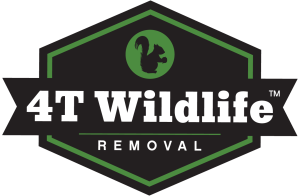Squirrels may be cute when they’re outside, but once they invade your attic, they can cause serious damage to your home. Many homeowners underestimate just how destructive squirrels can be. From chewing electrical wires to tearing up insulation and creating fire hazards, these small rodents can cost you thousands of dollars in repairs if not removed quickly.
If you’re wondering whether squirrels in your attic are a big deal, this guide will explain:
✅ The types of damage squirrels cause
✅ The long-term costs of waiting to remove them
✅ How to get professional help before it’s too late
Let’s dive in.
🐿️ How Squirrels Damage Attics
Squirrels are natural chewers—they gnaw on wood, wires, and insulation to keep their teeth from overgrowing. Unfortunately, this means they can wreak havoc inside your home.
1. Chewed Electrical Wires (Major Fire Hazard)🔥
One of the biggest dangers of a squirrel infestation is electrical damage. Squirrels chew on wiring, stripping away the protective coating and exposing live wires.
🚨 Why This Is Dangerous:
- Exposed wires can cause short circuits, leading to electrical failures.
- Sparks from chewed wires can ignite attic insulation, causing a house fire.
- The National Fire Protection Association (NFPA) estimates that rodents cause up to 20% of house fires in the U.S.
If you notice flickering lights, dead outlets, or a burning smell, squirrels may have already damaged your wiring.
2. Destroyed Insulation (Higher Energy Bills)💰
Squirrels tear up insulation to build their nests. While it might seem minor, this can have serious consequences for your home’s energy efficiency.
🛑 Problems Caused by Insulation Damage:
✔ Higher heating & cooling costs (damaged insulation won’t retain heat/cool air)
✔ Poor air quality (urine and droppings soak into insulation, creating odors and bacteria)
✔ Structural weakening (chewed insulation leads to moisture buildup & mold growth)
3. Structural Damage (Weakened Roof & Attic)
Squirrels chew through wood, plastic, and even metal to create entry points. Over time, this can weaken your home’s structure, leading to costly repairs.
🏠 Signs of Structural Damage:
✔ Holes in the roofline or eaves
✔ Chew marks around attic vents and beams
✔ Sagging or broken rafters
If left unchecked, these entry points can allow rain, mold, and even other pests (like raccoons and rats) to enter your home.
4. Contaminated Air & Health Risks
Squirrel infestations can pose serious health risks to your family. Their urine and droppings contain harmful bacteria and parasites.
🤢 Potential Health Concerns:
✔ Respiratory issues – Squirrel droppings can contain airborne bacteria.
✔ Leptospirosis – A bacterial infection that spreads through urine.
✔ Fleas & mites – Squirrels often carry fleas, which can infest your pets and home.
If you notice a strong ammonia smell in your attic, it could be due to squirrel urine soaking into the insulation.
💸 Long-Term Costs of Waiting to Remove Squirrels
Many homeowners think that squirrels will eventually leave on their own—but they don’t. The longer you wait, the more damage they cause, leading to higher repair costs.
Cost Breakdown of Squirrel Damage
| Type of Damage | Average Repair Cost |
|---|---|
| Electrical wiring replacement | $1,500 – $10,000+ |
| Attic insulation repair | $2,000 – $7,500 |
| Roof repair (holes/chewed wood) | $1,000 – $4,000 |
| Pest cleanup & decontamination | $500 – $2,500 |
| Total potential cost | $5,000 – $20,000+ |
The sooner you address a squirrel infestation, the more money you’ll save on repairs.
🛑 Don’t Let Squirrels Take Over – Act Now!
If you hear scratching noises or suspect squirrels in your attic, don’t wait until the damage gets worse. 4T Wildlife Removal offers:
✔ Free inspections – We assess the damage and identify entry points.
✔ Safe, humane removal – No poisons or dangerous traps.
✔ Prevention services – We seal entry points so they can’t come back.
📞 Call 4T Wildlife Removal 256-975-2014 before the damage gets worse! Schedule your free inspection today!


